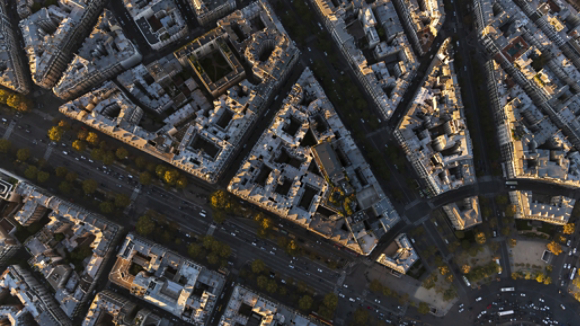January 08, 2024
Ask the Expert: Evolving Perspectives on Indoor Air Quality Management
One of our top air quality experts shares his perspective on balancing energy efficiency and indoor environmental quality.

As a member of Trane’s indoor air quality portfolio team, I have witnessed a significant shift in attitudes toward indoor air quality management in recent years. The COVID-19 pandemic increased awareness of the importance of clean air and the pollutants that can be present in our indoor environments. Last summer, wildfires turned the fresh air outside into dangerous conditions driving people back indoors looking for refuge.
Shifting priorities
While mitigating the presence of viruses and bacteria may no longer be the chief concern, there is still a strong focus on pollutants such as carbon dioxide (CO2), volatile organic compounds (VOCs) and other gases that can impact our well-being. The variability of these conditions and influencing factors is why it’s so important to understand the significance of monitoring and reacting to these pollutants to maintain a healthier indoor environment.
Monitoring and response
Having the ability to monitor air quality and respond accordingly is vital – and it starts with ensuring your system is ready with the necessary capabilities. By increasing filtration, utilizing controls and sensors, and detecting rising CO2 or VOC levels, we can initiate ventilation and introduce clean outside air while exhausting contaminated air.
However, it's essential to consider regional factors and the quality of outdoor air. While clean outside air is advantageous in most cases, certain regions with heavily contaminated outdoor air may require alternative approaches. Implementing the right sensors and controls is crucial for making informed decisions about ventilation strategies, preventing the unintentional introduction of additional pollutants.
In either case, actively monitoring and automating mechanical responses is the best way to ensure optimal air quality for occupants.
“Actively monitoring and automating mechanical responses is the best way to ensure optimal air quality for occupants.”
Jeff Wiseman
Indoor Air Quality Portfolio Leader, Trane
Balancing efficiency, air quality and cost
A common concern raised by facility managers is the perceived inefficiency of increased ventilation rates. In extremely hot or cold climates, heating or cooling outside air to achieve comfortable indoor conditions can be energy-intensive and costly. However, in regions with favorable outdoor conditions, introducing outside air can be highly efficient. Striking the right balance between air quality and energy efficiency requires careful consideration of daily and regional requirements.
Control systems empower building managers to optimize both air quality and energy efficiency. And technologies have evolved to address the growing awareness of different contaminants. By comparing indoor and outdoor air quality values and automating decision-making processes, control systems enhance HVAC system efficiency, leading to improved air quality and reduced energy consumption.
The future of indoor air quality
Looking ahead, I envision a future where large-scale implementation of transformative technologies revolutionizes indoor air quality. Efforts to control outdoor air pollution will be coupled with increased adoption of energy recovery ventilators (ERVs) in both commercial and residential spaces. By incorporating innovative technologies into indoor environments, we can ensure clean air, minimize energy consumption and work towards a healthier and more sustainable future.
“I envision a future where large-scale implementation of transformative technologies revolutionizes indoor air quality.”
Jeff Wiseman
Indoor Air Quality Portfolio Leader, Trane
Topic Tags

 English
English





















